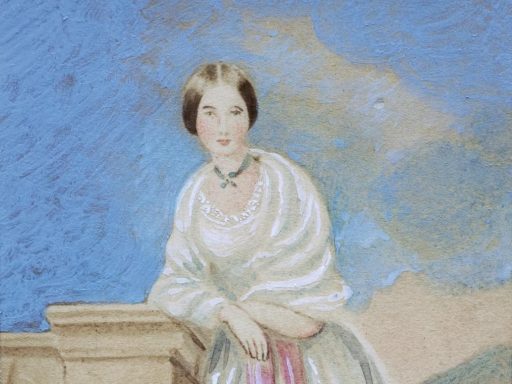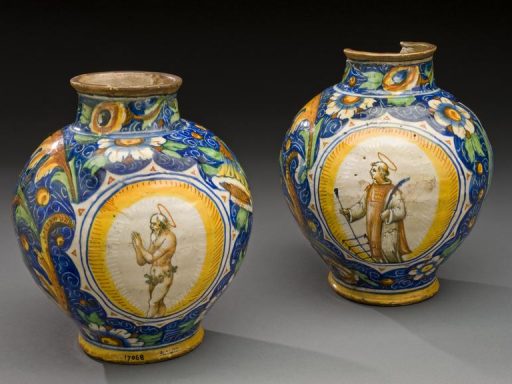The Science Museum might not be the first place you think of when you hear the word sex, but we’ve got lots of artefacts from all over the world designed both to titillate and to treat sexual dysfunction and infertility. Some even claim to cast a love spell (Brian Cox watch out – I have the power…). To add to this collection we’ve been working with Jonathan Roberts, lecturer at Mount Saint Vincent University, to make some new acquisitions. Jonathan’s been […]
The witching hour is fast approaching and ghouls, ghosts and monsters are coming out to play – but I’ll bet you’ve never seen anything quite like this. I’m not sure what scares me the most about the chimera we lovingly call the ‘merman’ – the strange stitching together of bird, fish and monkey, or the rather creepy pose or the way the eyes follow you around a room. The merman is more reminiscent of an animal version of Frankenstein than a museum […]
My colleague Ali’s recent post focussed on the often gruesome relics of some of the great men of science. In between Galileo’s finger and Einstein’s brain, I was struck by the ghostly serenity of Newton’s death mask. Creating such portraits of eminent people – either in life or death – was not uncommon in the days before photography. But these masks found a new purpose during the 19th century in the pseudoscience of phrenology. What better tools to back up its claims and […]
I recently wrote about how even the most mundane of objects can be transformed by the associations they have with people or events. But I’m also intrigued by how the unremarkable can be transformed in other ways. For example, through the powers they are said to possess or by physical transformation into something new. These are nodules of flint, a common mineral found across Britain. They look a bit like feet or legs and it’s this resemblance that makes them special. All three are […]
Reading Trilce’s recent post, I was reminded of objects from Sir John Franklin’s Arctic expedition within our vast medical collections. Simple items and anonymous fragments, easily overlooked on their storeroom shelves. But they are reminders of one of the most obvious, yet magical things about museum collections – even the most mundane looking objects can be transformed through association. This razor belonged to a member of Franklin’s team. Physically, it’s virtually indistinguishable from others in our collections. But by association, this simple and very […]
Seventy years ago, the bombing Blitz on Britain was into its second week. London remained the main target and amongst landmarks damaged on the night of September 18th 1940 were the world famous Lambeth Walk and the John Lewis department store on Oxford Street. While across the city, around 200 civilians were killed and 550 injured. Such daily figures were typical in a month that left nearly 6,000 Londoners dead. But although the numbers were horrific, they were a fraction of those […]
In Britain, closure of public toilets has become a cause célèbre in recent years. Such facilities first appeared in numbers following the Public Health Act of 1848. But many of these older sites and their modern counterparts – regularly vandalised and expensive to maintain – have closed their doors. Yet while these often substantial buildings still survive, albeit boarded up or changed in use, most of the old simple public urinals have long gone. This is less true in other parts of […]
I’ve recently returned from a fortnight’s holiday in Belgium (….a terribly underrated destination – no, really). While there, I persuaded my family to spend time exploring the World War One battlefields around Ypres. I was particularly interested in surviving evidence of frontline medical services. This was once an Advanced Dressing Station (ADS), at a site known as Essex Farm. One of the largest surviving groups of military buildings in the area, these damp, claustrophobic structures were comparatively comfortable. Built in 1916, […]
As a warm up for Ask a Curator day tomorrow, I thought I would give you an in-depth look at one of our objects that has been generating a lot of comments on Twitter. You may remember a post by my colleague, Stewart, on Arms, legs and ex-Servicemen showing our 20th century collection of prosthetic limbs. The history of artificial limbs is inseparable from the history of amputations and closely linked to warfare. This artificial arm was made for someone who had their left arm amputated above […]

Selina Hurley explores the life and work of Florence Nightingale, the Lady with the Lamp.
Increasing public access to our collections is one of our main priorities. But what do you do when so many of your objects are in storage? Our medical collections are built on the legacy of Victorian entrepreneur Henry Wellcome. He was a millionaire who collected far, wide and en masse. Even our main, highly object-rich medical gallery can only contain a small fraction of the vast number of objects we look after. At our London store, over 40 rooms are devoted […]

When you think of a medical collection, shelves packed with statues of saints aren’t the first thing that spring to mind, Selina Hurley, curator of medicine, tells us more.